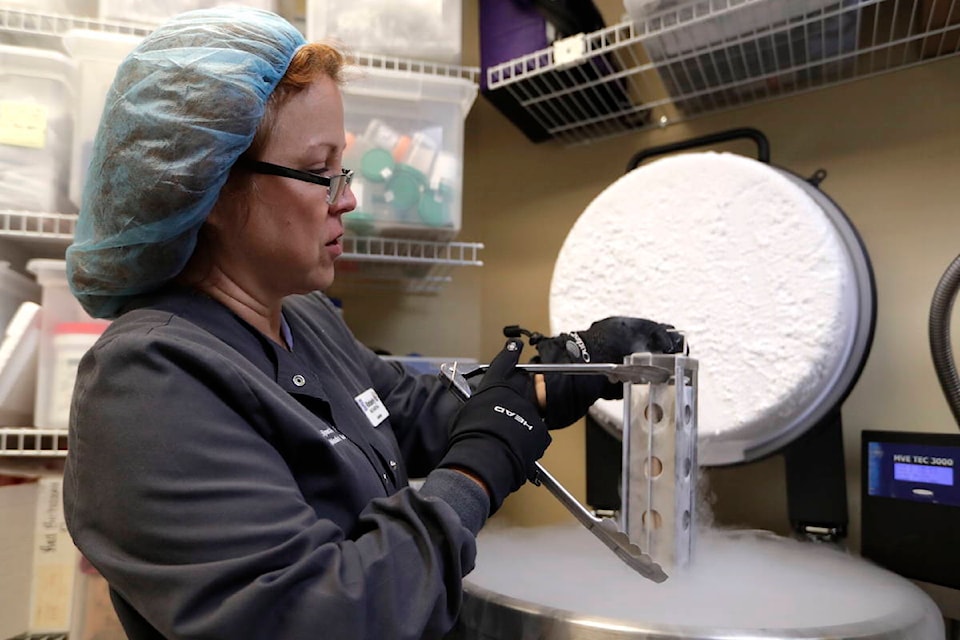Tens of thousands of embryos are stuck in limbo in fertility clinics, leftovers from pregnancy attempts and broken dreams of parenthood.
Some are outright abandoned by people who quit paying storage fees and can’t be found. In other cases, couples are struggling with tough decisions.
BIG READ: Seeing double - the trials and tribulations of twins
Jenny Sammis can’t bring herself to donate nearly a dozen of her extras to research. She and her husband agreed to do that when they made their embryos 15 years ago, but her feelings changed after using some of them to have children.
“I have these two gorgeous, smart people who came from this process,” Sammis said. “These embryos are all like seeds that could become potential people. That reality to me was all abstract when they were in the freezer.”
Tank failures at two clinics in Ohio and California last year revealed hidden issues with long-frozen embryos, including some from the 1980s when IVF began. A few years ago, medical groups developed sample consent forms clinics could use for new patients, spelling out what could happen to unused embryos. But that hasn’t resolved what to do with ones made long ago.
“It’s a real dilemma for these clinics,” said Rich Vaughn, a Los Angeles lawyer who headed the American Bar Association’s assisted reproduction committee for many years. “We don’t quite know what to do with them and everyone’s afraid to act” for fear they’ll be sued if people surface decades later and want their embryos.
RELATED: Trump birth control rule ignores science
The number is growing as more couples try IVF and because of changes in how it’s done. The old way was to mix eggs and sperm in the lab and transfer multiple fresh embryos to a womb, hoping at least one would lead to pregnancy. Now, couples usually freeze many embryos, test for health problems and transfer the most viable one at a time to avoid multiple births. That often means leftovers once the desired family is complete.
How many embryos are in storage isn’t known — centres don’t have to report that. One study estimated there were 1.4 million in the U.S. Researchers think 5 to 7 per cent are abandoned, though it’s as high as 18 per cent at some clinics. Some define that as a year of no contact or storage payments after reasonable efforts to find the owners others draw the line at five years. Some clinics search social media and hire investigators to find owners when abandonment is suspected.
The Associated Press
